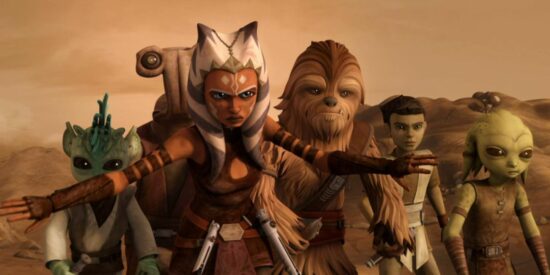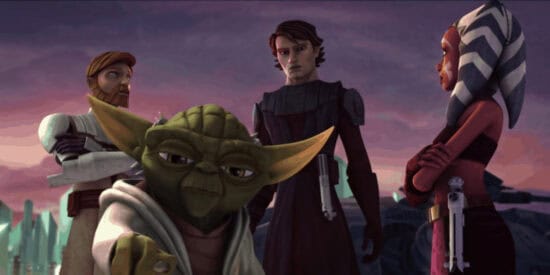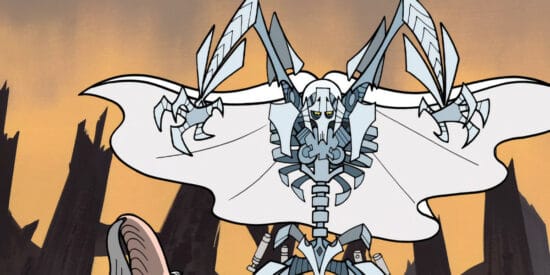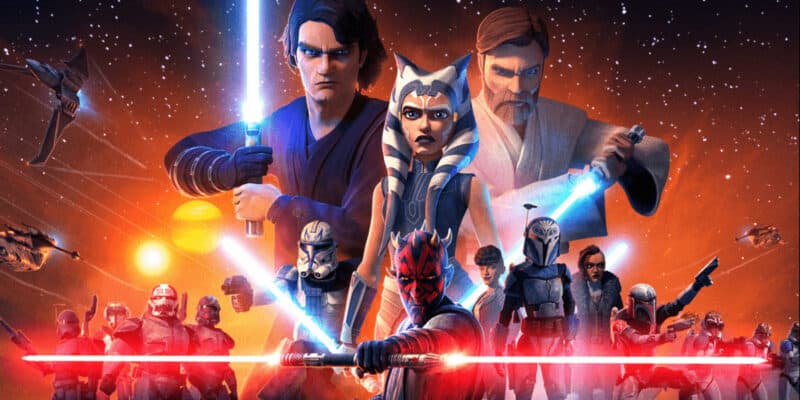Ah, Star Wars: The Clone Wars…

There is a sharp delineation among Star Wars fans: those who like The Clone Wars and Star Wars: Rebels, those who haven’t seen them, and those who really don’t care for them. With more and more content from Lucasfilm incorporating characters, storylines, and scenarios from the Dave Filoni series, it’s becoming apparent just how important they are, even for those who don’t like them.

Related: Ten Reasons Why ‘Star Wars’ Will Create A ‘Clone Wars’ Live-Action Series
So, let’s examine and dive right in: we’ll take a look at what Star Wars fans dislike about the series, what’s good about the series, and ultimately, why they needed to happen, especially when they did.
So, Why Do Some Star Wars fans hate The Clone Wars?
Of course, every fan will have their reasons, and while this list isn’t comprehensive, it does hit on the major points and complaints that Star Wars fans have against both The Clone Wars and Rebels. That being said, if you’re a fan of the series, you may want to skip to the next section…
Animation Style
A long time ago, in our very own galaxy, there was a 2-D animated Clone Wars series developed by George Lucas and Genndy Tartakovsky. The micro shorts were presented in a highly stylized form of animation, reminiscent of Tartakovsky’s other series, Samurai Jack. These were very cinematic, following the old adage of “show, not tell.”

Audiences followed along, watching the action, the facial expressions, and watching as Anakin Skywalker (Mat Lucas) and Obi-Wan Kenobi (James Arnold Taylor) fought their way across the Clone Wars. Audiences were also introduced to characters like Asajj Ventress (Grey DeLisle) and, for the first time, General Grievous (Richard McGonagle), who, unlike other adaptations of the character, was downright terrifying, and formidable, kidnapping Chancellor Palpatine (Nick Jameson) himself.

Following the success of the Tartakovsky series, Lucasfilm began producing the 3D Computer-Generated Clone Wars. Starting with the feature-length film that introduced Ahsoka Tano (Ashley Eckstein), the series endeavored to mimic the Tartakovsky style, incorporating instruction from George Lucas that the characters did not look like other CGI characters and almost like puppets…

What resulted came off more as a cheap copy of the 2D animation style: instead of looking unique, it just seemed like Lucasfilm wasn’t willing to pay animators to hand animate the series anymore and instead opted for the cheaper CGI, with flat textures, odd angles, and characters who were now twice removed from their live-action counterparts, and looked only vaguely like them.
Continuity
A little has already been said about the continuity of The Clone Wars, but there are some glaring issues introduced in the series. The biggest issue, however, has to be fan-favorite Ahsoka Tano (Eckstein). Initially extremely unpopular, the character has gained such a following that now, not only has she entered live-action with Rosario Dawson, but she also has her own solo series coming up on Disney+.

So what’s the continuity issue? There are several, actually. The first and easiest to recognize is the fact that she’s never mentioned in any film. The series would have viewers believe that Ahsoka (Eckstein) and Anakin (Matt Lanter), and Obi-Wan (Taylor) are all very close, which begs the question as to why they wouldn’t have even mentioned her in any of the films. Particularly given the events of the final season, where she’s in command of a clone company, the 332nd.

Another issue is brought up by the series itself. Time and time again, The Clone Wars paints the Jedi Order as cold and unfeeling and one that pushes Anakin (Lanter) to the Dark Side rather than him choosing it himself. Much of this is due to the Jedi Council’s distrust of Skywalker (Lanter), which begs the question: if they distrust him so much, why entrust the training of an impressionable padawan to his care?

Of course, there are other issues with continuity that Lucasfilm is endeavoring to clean up with series like Ahsoka, The Mandalorian, and others, but working within the established canon and expanding on it always makes for better storytelling than playing clean-up after the fact to make anachronisms fit in.
Characterization
Ironically enough, this point is the very reason why some Star Wars fans enjoy the animated series over the live-action offerings from Lucasfilm, but it’s still a problem nonetheless and plays very much into continuity as well. In Star Wars: Episode II – Attack of the Clones (2002), audiences see a brooding, impassioned, and headstrong Anakin Skywalker (Hayden Christensen), who already has shades of Darth Vader, murdering an entire Tusken tribe.

The Clone Wars shows audiences a jovial, headstrong, and loveable Anakin (Lanter), who, in addition to sounding nothing like his live-action counterpart, has occasional moments of flirtation with the Dark Side, but, all in all, is a likable hero, a mentor to Ahsoka (Eckstein), and a decent, if not misguided Jedi.

Then, in chronological order, comes Star Wars: Episode III – Revenge of the Sith (2005). Fans see once again a brooding, impassioned, and headstrong Anakin (Christensen) that is on a slippery slope to the Dark Side to which he inevitably falls. The difference in characterization is jarring and really paints the two as two completely different characters. They’re not the only ones, however.

Live-action Obi-Wan (Ewan McGregor) is serious, discerning, instructive, and worried about his friend. While it’s true, he has the occasional one-liner or jibe directed at Anakin (Christensen) or at his enemies; he’s a man on a mission first and foremost. The Clone Wars turned this dynamic completely around and made Kenobi (Taylor) the king of sass, tossing one-liners, insults, and jabs at just about everyone and everything.
If It Was Really All That Bad, Why Was It Necessary?
While The Clone Wars struggled in many areas, many new and great things were brought to Star Wars canon because of it, including Ahsoka Tano (Eckstein/Dawson), Cad Bane (Corey Burton), a deepened relationship between Obi-Wan (Taylor) and Anakin (Lanter), and much more.

Beyond that, if boiled down to its basics, the concept itself is fantastic: an in-the-trenches view of the great conflict of the prequel era. It fills in the time between Attack of the Clones and Revenge of the Sith and shows the gradual progression and infiltration of the Sith into every part of the Galaxy; it adds to the characters presented, it humanizes the clones, making them more sympathetic, and allowed for the exploration of other themes outside the Skywalker Saga.

It also introduced other fantastic characters and storylines like Tano (Eckstein/Dawson) and Bane (Burton), as well as the entire conflict of Mandalore, which is now being explored in The Mandalorian with Clone Wars alumni Katee Sackhoff reprising her role as Bo-Katan Kryze. Without the groundwork laid by Filoni and others, the emotional payoff of Din Djarin (Pedro Pascal) and the Mandalorians regaining their home planet wouldn’t have been nearly as well received.

Though these may explain what was good about the series, they aren’t the reasons it was necessary, however. After George Lucas closed the book on Star Wars with Revenge of the Sith in 2005, it really seemed as though Star Wars was done for. The tale had been told, and there was nothing left that needed saying. Then, three years later, came The Clone Wars.

The series ran from 2008 until 2014, with an additional season being released in 2020, which kept the franchise alive, and on the screen in the time between its debut and Star Wars: Episode VII – The Force Awakens (2015). It could easily be said that The Clone Wars paved the way and kept Star Wars itself alive for future generations, making possible not only the Sequel Trilogy but everything else from Lucasfilm that has come since.

Related: ‘The Mandalorian’ Might Be Hiding One ‘Clone Wars’ Character In Plain Sight
For Star Wars fans that love The Clone Wars, it’s something that they can revisit again and again and cherish as more content like The Bad Batch and Tales of the Jedi keep the animation style and the feel of The Clone Wars alive and well. For those that dislike the series, they must admit, at the very least, that they are growing pains, bringing Star Wars forward, and keeping it alive for years to come.
Which side are you on? Do you love the Clone Wars or hate it? Let Inside the Magic know in the comments below!
